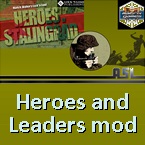asl3d
Posts: 6531
Joined: 2/6/2017
Status: offline

|
The H-677 was a casemate able to contain up to a Pak 43/41 88 mm, without auxiliary premises. Built using steel bars and a whole lot of concrete, these types of bunkers were a creation of German engineering. Seen on the beaches of Normandy, it held the powerful and famous 88mm (8.8 cm) PaK 43/41 towed anti-tank gun which delivered a serious punch when struck fired. These bunkers would usually be put at both ends of the beach so it's line of fire would cover the entire beach. At Omaha Beach it had two of these bunkers, while at the rest of the beaches, there was typically only one. It was constructed with a concrete wall on the outside that would be able to deflect incoming enemy fire. Most of these would be covered by earth or camoflage nets to stay hidden from reconaissance planes. Some were even painted in a camoflage pattern, but it depended on the local unit. A total of about 146 of these were created and placed on the Atlantic Wall.
Design plans were to be rigidly conformed to, however, it is estimated that less than half of the casemates, bunkers and shelters that comprise the Atlantic Wall in France adhered to the blueprints laid down by the designers and engineers of the Festungspionere Korps (Fortress Engineering Corps). Fluctuations in terrain accounted for most deviations, particularly in the actual location of the various components of a battery or strongpoint. The shortage of essential materials also caused builders to compromise on the designated quality of bunkers as the war progressed. But, that said, the various types of concrete defences remaining to this day are, by and large, still recognisable as to the purpose for which they were intended.
Tobruk or ringstand (ringstiinde) are among the most prolific as they were incorporated into virtually every fortification that could support them, including kitchens, stores and wash houses, while the R621 personnel bunker (Gruppenstand), and associated R501 are also numerous as are the H667 and H677. However, the most recognisable structure are the Sturm or reinforced casemates prevalent in the large shore batteries. The photograph of a German soldier stood alongside one of the massive guns of the Batterie Lindemann in the Pas de Calais endosed in its three metre thick casemate is one of the iconic images of the Second World War and one used frequently by Nazi propagandists to convince both the German people and possible invaders that the Atlantic Wall was an impregnable barrier. But the true situation was that there remained many long-range guns, particularly those under the control of the army, and their crews on the Atlantic Wall, particularly around the landing beaches, that had minimal protection from attack on D-Day.

 Attachment (1) Attachment (1)
_____________________________
Semper fidelis
|
 Printable Version
Printable Version


































 New Messages
New Messages No New Messages
No New Messages Hot Topic w/ New Messages
Hot Topic w/ New Messages Hot Topic w/o New Messages
Hot Topic w/o New Messages Locked w/ New Messages
Locked w/ New Messages Locked w/o New Messages
Locked w/o New Messages Post New Thread
Post New Thread